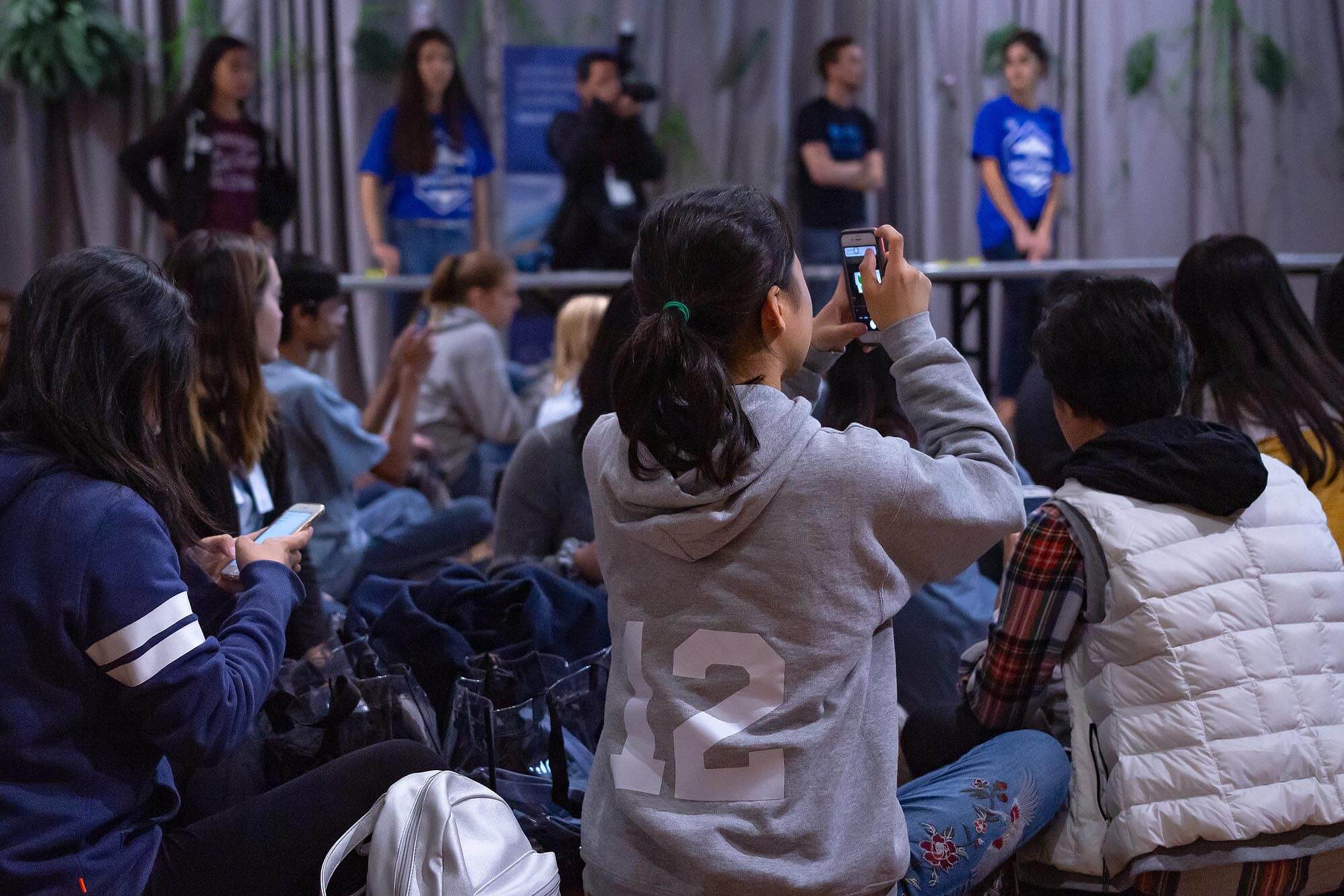As an educator for over 20 years, I have started questioning the goal of education.
With an overemphasis on grades and testing, sometimes the things that matter the most—such as learning about climate change—get put on the back burner.
To bring environmental literacy and advocacy to the forefront, and educate high school students about climate change, I use the Youth Participatory Action Research model. Using this approach, students learn about climate change in a research-based model and take action. It is an engaging, multidisciplinary approach that aligns with the Next Generation Science Standards (NGSS) and California’s Environmental Principles and Concepts (EP&Cs).
To scale climate change education, we organized the Youth Climate Action Summit with The Tech Interactive’s Tech for Global Good student board. The summit was organized in partnership with The Tech Interactive of San Jose, and sponsored by the National Geographic Society. The goal of this daylong event was to educate and galvanize students on the issue of climate change. During this daylong summit, over 500 students learned about climate change through keynote addresses and breakout sessions.
Students learned from the firsthand experience of explorers such as Dr. Bob Ballard from his expedition ship Nautilus. Through presentations from National Geographic explorers, students gained scientific understanding of climate change and learned about tangible and practical solutions to reversing the climate crisis. Students also heard how climate change is affecting their peers in the Galapagos Islands and in Florida.
While organizing a youth summit may seem overwhelming, a teacher can start environmental education and advocacy at their classroom level, eventually scaling it up to the school or community level.
Classroom environmental education could involve redesigning lessons and activities with environmental literacy in mind, engaging students through clubs, and through other activities. Some of the club activities included raising awareness about single-use plastics, taking pledges to reduce their carbon footprint, planting trees, and making art out of recycled materials.
Making events schoolwide requires a little more time and organization because of the larger number of teachers and students involved. The best thing about including your entire school is that you have the opportunity to engage students across subjects. This creates multidisciplinary learning and enables students to see common threads across different disciplines. Students are allowed to express their learning of climate change through diverse mediums including artwork, performance, presentations, and technology.
To scale a schoolwide project to a communitywide project—like the youth summit—requires the support of a local community-based organization, empowering students from diverse backgrounds and schools to take ownership.
At whatever scale you feel comfortable in engaging your students, here is a step-by-step Educator’s Guide for research-based learning of environmental issues, complete with worksheets, images, and assignments to help you implement this in your classroom. A 2005 US Department of Education study found that after three decades of school-based environmental education programs, only one-third of American adults can pass a simple test of environmental knowledge with a grade equivalent to A, B, or C. Engaging students in environmental literacy and advocacy is not only the need of the hour, it is the socially responsible thing to do.
My vision for an impactful climate education is the one that does not end with a lesson or unit, but shapes the attitudes of tomorrow’s leaders and policymakers.
We have found Youth Participatory Action Research to be that tried and tested model. My hope is that this model will be incorporated in PK–12 climate education to mitigate the issue of politicizing education, and to bring the heart into the learning of climate change for lasting impact.
Photo credit: The Tech Interactive.






